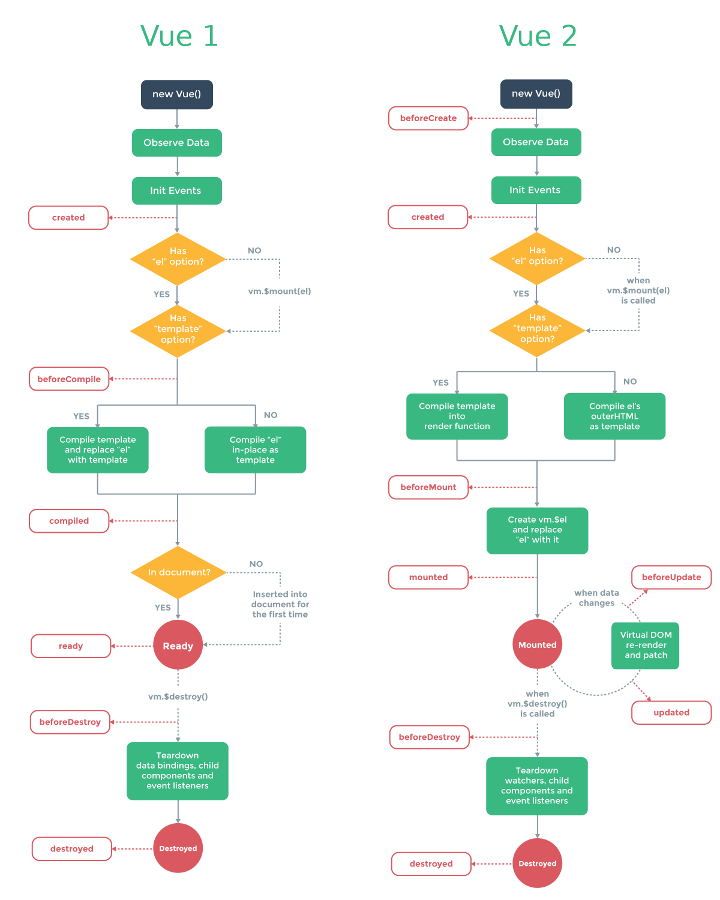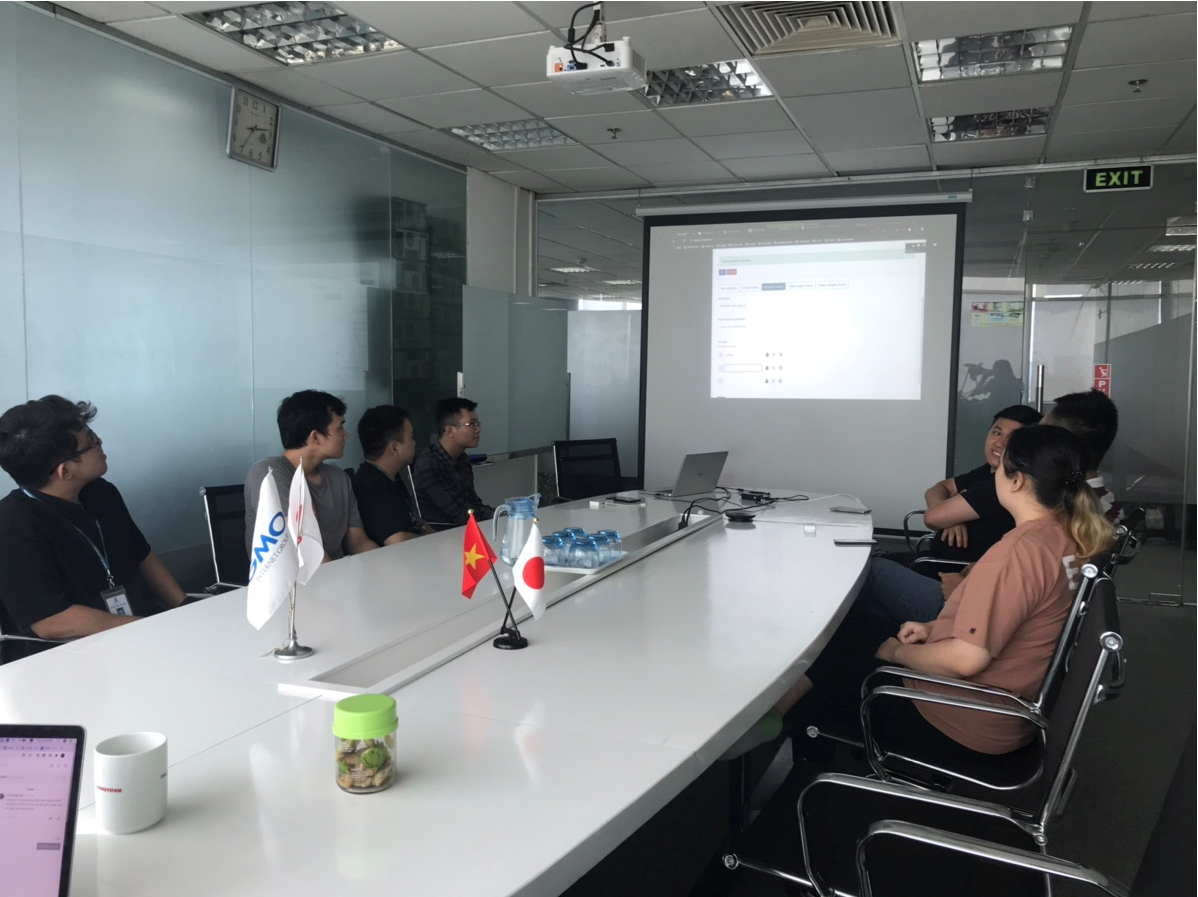Khi bắt đầu tìm hiểu một ngôn ngữ hay framework, technology mới thì code được tất nhiên là tốt, nhưng hiểu về concept lại là điều rất quan trọng.
Học Vuejs rất nhanh, nhưng không nên vì quá nhanh mà quên mất những con concept quan trọng nhất của Vuejs.
1. Computed và methods
Thật ra mục này tương tự như câu hỏi “Computed và Methods khác gì nhau?”.
Đầu tiên, computed tất nhiên không có tham số (đối số) – argument. Thường được sử dụng để xử lý data từ những properties của component hiện tại hoặc chuyển từ component khác tới
Computed properties actually work like getters, they are usually using to compose new data from existing properties and they don’t accept arguments. Computed properties know if the values used in the function changed so they don’t need to run every time to check
Còn về methods thì sao. Method là function, cứ nhớ là vậy.
Methods are static functions and they are useful for DOM event handling, logic parts. And you can pass arguments to methods. Methods don’t know if the values used in the function changed so they need to run every time to check.
Hiểu để sử dụng Computed và Methods lúc nào cho đúng cũng là hiểu được Vuejs concept.
2. Lifecycle hooks
Điều bắt buộc phải nắm rõ là Lifecycle hooks. Đây là nội dung bắt buộc phải nắm rõ vì hiểu được Lifecycle mới biết một component thực sự hoạt động như thế nào?. Trải qua những bước gì để có một component hoàn chỉnh cho ta thấy?
Lifecycle đôi khi cũng được đánh giá là Vuejs concept quan trọng nhất cần phải biết.
Ví dụ như created. Step này component chưa render trên DOM, ta có thể thoải mái chuẩn bị data, gọi API, …
Sau khi đã đầy đủ dữ liệu thì thực hiện tính toán và render trên DOM để có một component hoàn chỉnh.
Kế đến là mounted

The mounted hook calls after the template have created and inserted in the DOM, and now you have access to the vm.$el property. But also you should remember that mounted does not guarantee that all child components have also been mounted
3. Vue to re-render component như thế nào?
Làm việc với Vuejs tất nhiên không thể tránh khỏi việc rerender lại một component. Dữ liệu update, thao tác người dùng thay đổi, …. Có vô vàn thứ ta cần thực hiện, thông qua rerender component.
Tuy nhiên, render lại component cũng có concept để bám theo. Cách này hay cách kia đều được cân nhắc kĩ lưỡng lợi và hại. Bài viết này sẽ phân tích 2 cách rerender là sử dụng “v-if” và “key”.
Cách đầu tiên và thông dụng nhất:
3.1 Sử dụng v-if
<template>
<some-component-re-render v-if="isComponentVisible"/>
</template>
<script>
export default {
data() {
return {
isComponentVisible: true;
}
},
method() {
forceRerender() {
this.isComponentVisible = false;
this.$nextTick(() => {
this.isComponentVisible = true;
})
}
}
}
</script>
Với cách này, trình tự thực hiện như thế nào?
- Giá trị của
isComponentsVisiblekhởi tạo làtrue, vì vậy compoentsome-componentsẽ được rendered - Khi ta gọi hàm
forceRerenderlại set giá trị choisComponentsVisiblelàfalse - Lúc này dừng render component
some-componentvì kiểm tra thấyv-ifbằngfalse - Lúc này next tick set lại
isComponentsVisiblelàtrue - Lúc này giá trị của
v-iflàtrue, ta lại render lại compoentsome-componentthêm một lần nữa.
First, we got to wait until the next tick or we won’t see any changes. In Vue, a tick is a single DOM update cycle. Vue will collect all updates made in the same tick, and at the end of a tick, it will update what is rendered into the DOM based on these updates. If we don’t wait until the next tick, our updates isComponentsVisiblewill just cancel themselves out, and nothing will update.Đó là cách hơi chuối, loằng ngoằng cho mỗi cái mục đích “rerender lại component”. Có cách khác hay hơn để forceRerender một component.
3.2 Sử dụng key
<template>
<component-can-re-render :key="componentKey" />
</template>
<script>
export default {
data() {
return {
componentKey: 1;
}
},
method() {
forceRerender() {
return ++this.componentKey;
}
}
}
</script>
Với cách viết này thì mỗi khi function forceRerender() được gọi, giá trị của key componentKey sẽ thay đổi. Vuejs sẽ biết điều này và “xóa component cũ, thực hiện tạo component mới”.
Nên nhớ là re-render không thực hiện trên component cũ. Vuejs thực chất xóa component cũ và tạo lại một cái mới.
Đây cũng là Vuejs concept cần nhớ khi muốn thực hiện rerender lại component.
4. Đừng viết JavaScript expressions khó quá
Khó ở đây không phải viết sao cho tốt, cho dễ refactor. Khó ở đây đang được hiểu là đừng viết những logic quá rắc rối ở template. Hãy thực hiện chúng ở function.
Thử tưởng tượng một component có 30 dòng ở template, nhưng có tới 5 cái v-if, v-for và v-else thì quả thật là tai họa. Đọc để hiểu cũng đã là cả một vấn đề, nói gì tới đọc hiểu rồi còn sửa code. Thảm họa.
Cùng xem xét ví dụ sau:
<template>
<ul>
<li v-for="(car,index) of cars.filter(carItem => carItem.topspeed >= 180 && carItem.color != 'red') :key="index"">
{{ car.model }}
</li>
</ul>
</template>
<script>
export default {
data() {
return {
cars: [
{ model: 'BMW', topSpeed: 300, color: 'red' }
]
};
}
};
</script>
Chỉ cần khoảng 3,4 điều kiện như thế này lồng nhau. Đọc source thôi cũng nhức cmn cả đầu. Thay vì sử dụng quá nhiều expressions, ta có thể handle ở method. Viết lại như sau sẽ dễ dàng hơn:
<template>
<ul>
<li v-for="(car,index) of sortedCars :key='index'">
{{ car.model }}
</li>
</ul>
</template>
<script>
export default {
data() {
return {
cars: [ { model: 'BMW', topSpeed: 300, color: 'red' }
]
};
},
computed: {
sortedCars() {
return this.cars.filter(carItem => carItem.topspeed >= 180 && carItem.color != 'red');
}
}
};
</script>
Cách viết này rõ ràng dễ hiểu hơn nhiều. Dễ theo dõi, template cũng không quá rối mắt.
Nói ít viết Javascript Expression ít đi không hẳn là một Vuejs Concept. Tuy nhiên, đây là điểm đáng để lưu ý khi code với Vue.









